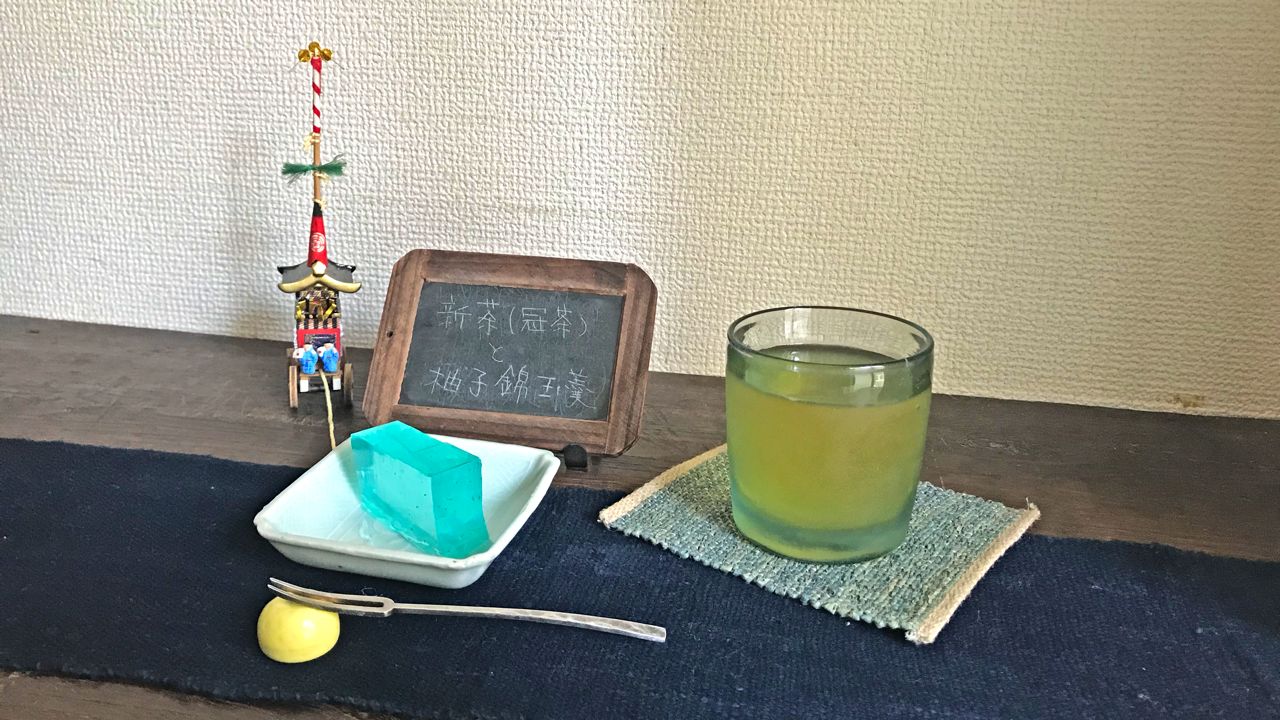July 2021 – Shincha from Tsukigase
Here’s our second Shincha (新茶) of the year! It is funny, but we selected the very same Shincha, exactly 5 years ago: a Kabusecha from Tsukigase (月ヶ瀬) in the prefecture of Nara (奈良).

Photo provided by Tsukigase Organic Tea Farm (月ヶ瀬健康茶園)
Shincha, Kabusecha
According to the report from the tea producer, Tsukigase Organic Tea Farm (月ヶ瀬健康茶園), spring came earlier this year, and there were some heavy frost in the beginning of April. Their first harvest of Kabusecha (冠茶) took place on May 15th. Preceding the harvest by 10 days, the tea plantation was covered with sunshade nets in order to make Kabusecha.
The rainy season also arrived earlier this year, compared to previous years, so it was hard for the producer to figure out the perfect timing for the harvest. Because usually the rainy season comes around the beginning of June, however, it came around the middle of May this year. Shincha is made of tea shoots only. That is why Shincha has a special scent and taste for this season, the springtime scent.
A refreshing tea with a refreshing sweet thing, namely, Shincha with a Wagashi called "Yuzu Kingyokukan (柚子錦玉羹)" made of agar, sugar, starch syrup and yuzu paste. To overcome a very hot and humid summer in Japan, we absolutely need refreshing things for the eyes and the taste!

Season of Lotus Flowers
Near my apartment, there is a large park and inside, a pond of lotus. And now the lotuses are in bloom, but only during the morning. They all fade by the afternoon. Therefore, we have to hurry up and go there in the early morning to watch the lotus flowers.
For Asian people, we consider the lotus as something sacred and pure, because they grow in ponds, stagnant water or mud, but are never covered by mud, and carry an immaculate and beautiful flower. That is the reason why, as a kind of metaphor, Buddha is sitting on a pedestal in the shape of a lotus flower.
We often confuse lotus with water lily, famous for the paintings by Claude Monet. But the difference between these two plants is that the water lilies bloom at the water level, on the other hand, the lotuses have a long stalk which pushes straight toward the sky and have a magnificent flower. That is a really celestial plant.
Of course, the great Buddha in Nara is also sitting on the base of lotus flower which has 108 petals, the number of karmas that a human being has in this world, according to the Buddhist doctrine. It means that even if we have a lot of desires/karmas, we could become a purified Buddha one day like a lotus.

Brewing Shincha
Here’s a method of tea infusion with boiling water recommended by the tea producer.
First of all, put 5 grams of Shincha in a tea pot, pour 50ml (1.7oz) of boiling water (95ºC/200ºF), count 5 seconds and pass the infused tea to another recipient. Repeat 4 more times. Finally, pour 100ml (3.4oz) of boiling water, wait 60 seconds, and pass the infused tea in the recipient.
To summarize: 5g of tea and water at 95ºC (200ºF): 5 x 50ml x 5s + 1 x 100ml x 60s.
To make a more classic style of tea, the amount of tealeaves should be adapted according to the desired taste: it should be around 2 tea spoons (6 grams) of Shincha for 200ml (7oz) of spring water. The infusion should last between 1.5 and 2 minutes in water at 60 - 70ºC (140 to 160ºF). The second infusion should be done for 60 seconds at 80ºC (175ºF) and the third one faster at an even higher temperature. Enjoy your tea!
